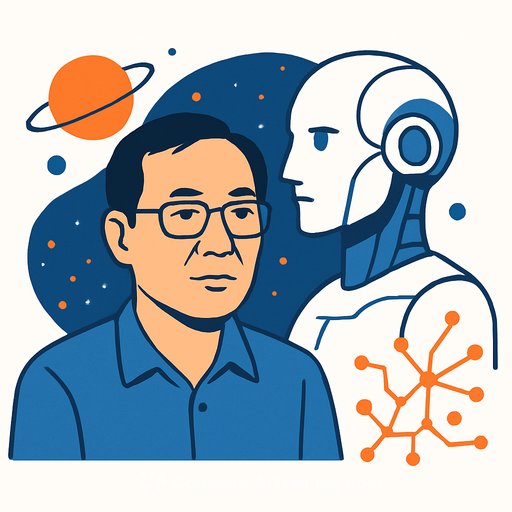AI, Cheating, and Credible Classroom Policy: A Practical Playbook for Educators and Writers
AI is here. Students are already using it. The job isn't to block the tide, it's to teach students how to produce original work with AI as a tool-without outsourcing the thinking. This article gives you clear policy language, assessment ideas, and communication templates you can deploy this semester.
Start with the goal: learning over output
Cheating isn't "used AI." Cheating is "claimed work you didn't do." Define the thinking students must demonstrate, then set rules for how AI can support (not replace) that thinking. Make disclosure part of the assignment, not an afterthought.
Policy language you can adapt
- Definition: "AI tools" include chatbots, image generators, code assistants, and grammar tools.
- Allowed uses: Brainstorming, outlining, explaining concepts, language refinement, and generating practice questions.
- Restricted uses: Submitting AI-produced drafts as your own, using AI to fabricate data or citations, or to complete assessments labeled "AI-off."
- Disclosure: Students add an "AI Use Statement" listing tools used, prompts, and how AI shaped the work (2-5 sentences).
- Attribution: Quote any AI-generated wording over 40 words or distinctive phrasing; cite tool and date.
- Review process: Suspected misuse triggers a learning-focused conference, review of drafts/revision history, and a brief oral check-not a penalty by default.
AI detection: use sparingly and never alone
AI detectors are inconsistent and can mislabel fluent writers and multilingual students. Treat detector output as a weak signal, not evidence. Rely on process artifacts: notes, outlines, drafts, version history, and short oral checks to confirm understanding.
For context, see guidance from the U.S. Department of Education's Office of Educational Technology and UNESCO for balanced approaches to AI in education.
- US Department of Education: AI and the Future of Teaching and Learning
- UNESCO: AI and Education Guidance
Assessment that resists shortcutting
- AI-on vs. AI-off tasks: Label which parts allow AI. Example: research planning (AI-on), final analysis (AI-off, in class).
- Process grading: Grade the workflow: proposal → outline → draft → revision → reflection. Each stage has a checkpoint.
- Oral micro-vivas: Two-minute discussions on a key paragraph, data choice, or claim. Confirms authorship fast.
- Personalized prompts: Tie assignments to local data, class discussions, or student-chosen sources. Harder to outsource.
- Make thinking visible: Require a "How I got here" reflection and screenshots or links to version history.
AI Use Statement (student template)
"I used [tool] to [purpose: outline, clarify concept, language edits]. Key prompts: [paste 1-2]. I accepted/edited [describe changes]. All analysis, examples, and conclusions are my own. Date/time of use: [insert]."
Equity and access
Policies must work for every student. Provide school-approved tools or a no-cost option. If you ban a tool, offer an alternative path to the same learning outcome. Teach ethical use, bias awareness, and verification habits.
Communication you can copy
- To students: "You may use AI to plan and clarify. You may not submit AI-written drafts. Disclose how you used AI in the AI Use Statement. I will ask about your process."
- To parents: "We teach responsible AI use. Students learn to plan with AI, verify sources, and write in their own voice. Grades reflect both the process and the final work."
- Syllabus clause: "AI is a tool, not a substitute for your thinking. Detector scores alone will not determine misconduct. Process evidence and conversation will."
Rubric add-on: integrity and process (10%)
- Full credit: Clear AI Use Statement; drafts and notes present; consistent voice; can explain choices.
- Partial: Disclosed but thin evidence of process; explanation is vague.
- Zero: No disclosure despite visible AI patterns; cannot explain work; fabricated sources.
For educator-writers teaching writing
- Voice lab: Have students feed their own writing into AI to extract style rules, then revise by hand using those rules.
- Source triage: Students prompt AI for potential sources, then verify and annotate real sources. AI lists aren't citations.
- Revision sprints: Use AI to propose three edits to a paragraph; students choose one and justify why it improves clarity or logic.
Quick-start checklist
- Publish a short AI policy with allowed, restricted, and disclosure rules.
- Label assignments AI-on or AI-off and grade the process.
- Collect drafts and a brief reflection with every major task.
- Use oral micro-checks instead of leaning on detectors.
- Provide access to approved tools and show how to verify outputs.
Level up your own skills (optional resources)
If you're building curriculum or teaching writing with AI support, upskilling helps. Browse practical courses and prompt workflows for educators and content creators.
- AI courses by job role - pick educator or writer
- Prompt courses - structure, testing, and review loops
The goal isn't perfection. It's honest learning, clearer thinking, and a system students can follow without guessing the rules. Set the bar, show the path, and make the process worth points.
Your membership also unlocks:










